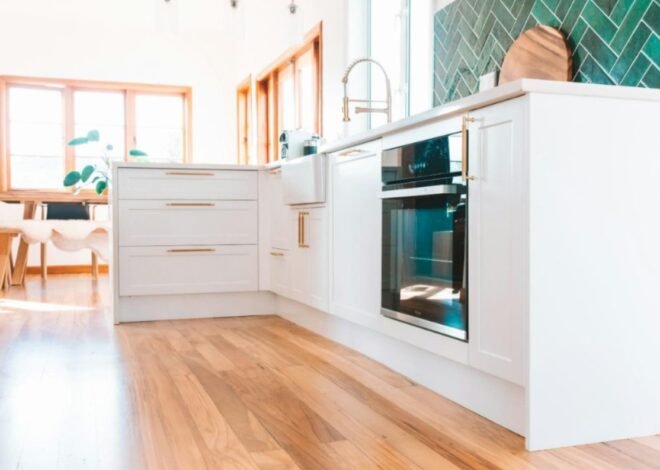
Semi-Commercial Vs Traditional Commercial Mortgages: Key Differences And Considerations
Selecting either semi-commercial vs traditional commercial mortgages can often seem confusing. As property owners, we all strive to secure the ideal arrangement for our properties, correct? You can feel confident knowing that this is a common situation. Indeed, properties don’t always neatly fit into one distinct mortgage category or another.
We’ve committed ourselves to thoroughly studying both types of mortgages. Our article intends to clarify any misunderstandings and spotlight the essential details about each choice. Overflowing with guidance, it is prepared to assist you in making a
knowledgeable decision. Thus, continue to peruse for these crucial revelations!
What Are Semi-Commercial and Traditional Commercial Mortgages?
So, we’re chatting about semi-commercial and traditional commercial mortgages, right? Semi-commercial mortgages mix a bit of both worlds: part home, part shop. On the other hand, traditional commercial mortgages are all about business properties – think shops and offices.
Now let’s get into the nitty-gritty of how they’re different, shall we?
Definition of semi-commercial mortgages
Semi-commercial mortgages are for properties that mix business and living spaces. Imagine a shop with flats above it. This type of mortgage helps people buy or refinance these mixed-use buildings.
We use them when the property is part work, part home. They’re different from normal house loans or purely commercial ones because they cover both uses. The buyer might run a business downstairs and live upstairs, or rent out parts of the building.
We find lenders who understand this mix of needs. They look at how much the whole property can earn and how safe the investment is.
Definition of traditional commercial mortgages
Traditional commercial mortgages are loans for buying or refinancing property used purely for business. These properties could be offices, shops, or factories. The bank lends you the money, and the property itself acts as security.
If things go south and you can’t pay back the loan, the lender can take your property.
The terms of these mortgages often last from three to 25 years. Interest rates might vary based on how risky the lender thinks the deal is. We’ve seen plenty of businesses use these mortgages to get their hands on a permanent base or expand what they already have.
Now we’ve got that sorted; let’s move on to comparing semi-commercial and traditional commercial mortgages directly…
Key Differences Between Semi-Commercial and Traditional Commercial Mortgages
Key differences between semi-commercial and traditional commercial mortgages really boil down to what the property is used for and how the loans are structured. Semi-commercial properties mix things up with both residential and business spaces, while traditional commercial mortgages stick to straight-up business or investment properties.
Property type and usage
We’ve seen a lot of different buildings in our time, from little shops with flats above them to big offices. Semi-commercial properties mix things up – think of your local shop that has a flat on top.
That’s what we’re talking about here. These places have both business and living areas in the same building. Traditional commercial mortgages, on the other hand, are all about spaces used only for business – like an office block or a warehouse.
Now, using these places can be quite different too. If you own a semi-commercial property, you’re dealing with tenants who live there and maybe run businesses downstairs. This means you need to think about both home and work stuff when managing the place.
With traditional commercial spaces, it’s more straightforward since it’s all about business use – making sure companies have what they need to operate smoothly from your building.
We found this out firsthand when helping clients figure out which type suited their plans better – blending residential comfort with the commercial hustle or focusing solely on creating a productive workspace.
Loan terms and interest rates
Transitioning from the type and use of property to discussing finances, specifically loan durations and interest rates, requires a comparison. Semi-commercial mortgages and traditional commercial mortgages each have distinctive guidelines pertaining to borrowing costs and the commitment period. Presenting the information in a table will simplify the comparison.
|
Semi-Commercial Mortgages |
Traditional Commercial Mortgages |
|
|
Loan Durations |
Usually up to 30 years |
Typically ranges between 3 to 25 |
|
Interest Rates |
Can be more competitive due to the |
Often higher, reflecting thethe |
|
Fixed Rates |
Available, providing stability for |
Available, but might come with |
|
Variable Rates |
Linked to the Bank of England’s |
Similarly linked, but the margin |
In this comparison, a delicate balance is evident. Semi-commercial mortgages
are often favored by lenders due to the reduced risk
accompanying the residential component, potentially leading to more favorable interest rates and extended repayment terms.
Conversely, traditional commercial mortgages represent a greater speculative element for lenders due to their exclusive focus on business, potentially resulting in less accommodating terms. Interest rates may be somewhat elevated
with a shorter fixation period.
It is not a matter of one being superior to the other; rather, it depends on what corresponds with your requirements. For those with a residential component, semi-commercial may be appropriate. For those operating a business, a traditional commercial mortgage may be more applicable.
Ultimately, the decision depends on the purpose of the property and your financial status. The selection process is similar to choosing a car; the best fit is contingent on your individual needs. Opt for the mortgage that aligns with your circumstances, and you will be well-positioned.
Eligibility criteria and documentation
Exploring the intricacies of commercial mortgages, we’ve unearthed some intriguing insights into the distinctions between semi-commercial and traditional commercial mortgages. Notably, the criteria for approval and documentation can be quite different. We have created a clear comparison to illuminate these details:
|
Semi-Commercial Mortgages |
Traditional Commercial Mortgages |
|
Mixed-use properties (shops with |
Purely commercial properties |
|
Applicant might need to provide |
Focus is more on the business’s |
|
Personal financial statements are |
Business plans and commercial |
|
Some lenders ask for evidence of |
Business experience and property |
|
Less documentation related to |
Thorough documentation on business |
Through our analysis, we’ve noticed that when considering a semi-commercial
mortgage, the combination of residential and commercial factors requires
careful management, perhaps more so than with traditional commercial mortgages.
The epiphany came when we realised that the mixed-use property we were evaluating required us not just to submit a robust business plan but also to demonstrate that the residential portion was a sound part of the investment.
Grasping these subtleties early was enormously beneficial in preparing our application. Compiling proof of financial health for both the commercial and residential parts was a challenging yet enlightening task, highlighting how the success of one affects the other in a semi-commercial enterprise.
Conversely, our colleagues who selected traditional commercial mortgages emphasized focusing on demonstrating the business’s prospects. They dedicated many hours to fine-tuning business plans and compiling financial records.
In summary, our shared experiences reveal that a clear understanding and thorough preparation for the specific requirements associated with semi-commercial or traditional commercial mortgages are crucial to a successful outcome. Our collective journey, filled with learning and occasional moments of exasperation over documentation, has deepened our grasp of what is required to prosper in these financial ventures.
Considerations When Choosing Between the Two
Picking between semi-commercial and traditional commercial mortgages is a bit like deciding if you’d rather have tea or coffee in the morning—it all depends on your taste and what you’re planning for the day.
If your business dreams are big and bold, but you also fancy a touch of residential charm, weighing up factors like how much cash you can splash and whether long-term plans involve flipping properties or becoming the next big landlord in town will guide your choice.
Business goals and property requirements
We all have unique requirements, particularly in terms of where we conduct our affairs. Perhaps some of us are aspiring to establish a cafe on the ground floor, supplemented by a cozy flat above – this is where semi-commercial mortgages prove to be a boon.
These are ideal for assets that comprise both commercial and residential portions. Consider it like deriving benefit from two distinct aspects.
Conversely, if your interest dwells in augmenting your domain with a large office structure or a shopping precinct, standard commercial mortgages will be your preferred choice. These cater to those who are dedicated solely to commercial usage.
Understanding your desired outcome significantly aids in this decision-making process.
Choose with consideration, as each route paves the way for diverse journeys.
Financial flexibility and long-term planning
Moving on from business goals, let’s chat about financial flexibility and long-term planning. It’s a big deal for us all. Choosing between
semi-commercial and traditional commercial mortgages affect our wallets in the long run.
With semi-commercial mortgages, we’re mixing business with a bit of home life, which can lead to lower interest rates compared to full-on commercial properties. This means we could save money over time, making it easier to manage cash flow.
Planning ahead is key. We need to think about how much we can pay back each month without breaking the bank. For those eyeing up
the future, fixed-rate options might be your best mates here—they keep payments steady over time.
And let’s not forget deposits! They often say “The more, the better,” because stumping up more upfront might snag us lower mortgage
rates.
All in all, it comes down to what fits our situation today while keeping an eye on tomorrow’s dreams and goals. Whether it’s finding a spot that serves as both shop and sanctuary or going all-in with a traditional commercial space depends on how much wiggle room our finances have today and where we see ourselves down the line.
Risk factors and lender preferences
After considering how financial flexibility and long-term planning play into choosing between semi-commercial and traditional commercial mortgages, we need to talk about the risk factors and what lenders like to see. It’s all about finding a balance that works for you and appealing to those who lend the money.
Here’s what we’re looking at:
- High deposit amounts reduce risk for lenders. They usually want you to put down more money upfront on commercial properties. This makes them feel safer about lending you the rest.
- Lenders check your credit score closely. A good score can open doors to better mortgage rates and terms, whether you’re looking at semi-commercial or traditional commercial options.
- Your experience matters. If you’ve successfully managed property before, lenders are more likely to trust you with their money. They see past success as a sign of future reliability.
- The property’s income potential is key. Lenders want to know that the place will make enough money to cover your loan repayments. So, they’ll look at rental income forecasts or business revenue projections.
- Location plays a huge part too. Properties in sought-after areas are less risky from a lender’s perspective because they can easily be rented out or sold if things go south.
- The condition of the property can influence decisions. A well-maintained building means lower repair costs in the future, making it a safer bet for both parties.
- Interest rates reflect risk levels. Higher rates often mean the lender sees the loan as more of a gamble.
We always aim for deals that align with our needs but also look good to those holding the purse strings. It’s about striking that perfect balance between what we want and what makes us a safe bet for lenders.
Detailed Guide on Semi-Commercial Mortgages
So, we’re here to talk about semi-commercial mortgages. They’re a bit different from the usual stuff. These mortgages mix business and pleasure – okay, not pleasure, but residential use! Imagine owning a building where people live above a shop or café you run.
That’s what we mean by “semi-commercial.” You might think it sounds complicated, but really, it’s just about understanding what you’re getting into.
We need to get our paperwork in order first. Lenders want to know all about us and the property before they agree to anything. They’ll look at how much money we make and check out the building carefully.
If we’ve got plans for the place or already making good money from it, that’s a huge plus! Money talks in this game – both ours and the potential of the property itself.
Conclusion
We’ve talked about two types of mortgages: semi-commercial and traditional commercial. Each one fits different needs. Choosing the right one depends on what you want for your property and business.
We also shared how to make a good choice based on goals, plans, and risks. Let’s keep learning and making smart choices in our property adventures.
Read Also:













Really Appreciate this blog post, can you make it so I receive an alert email whenever you make a new article?